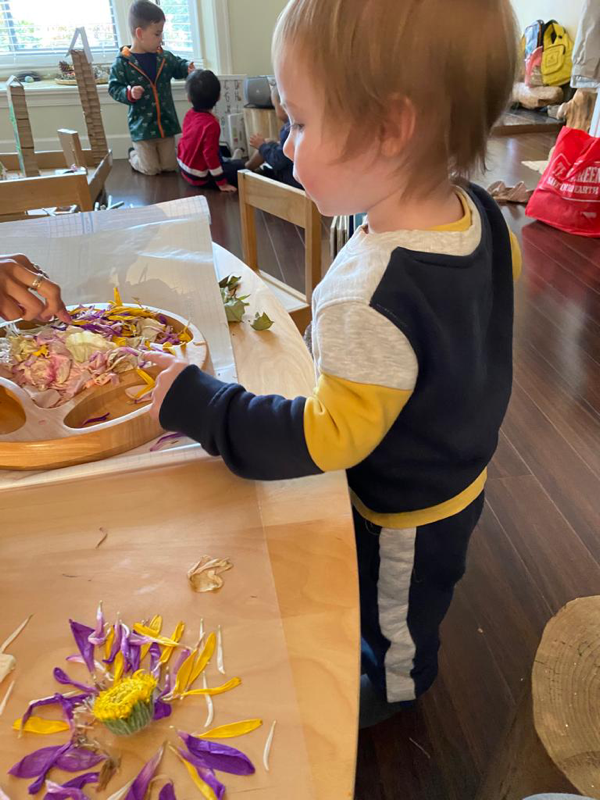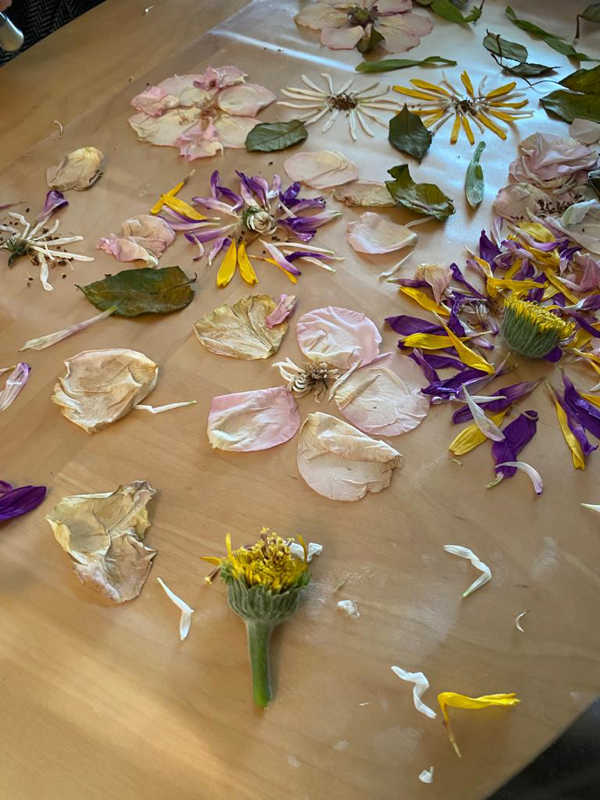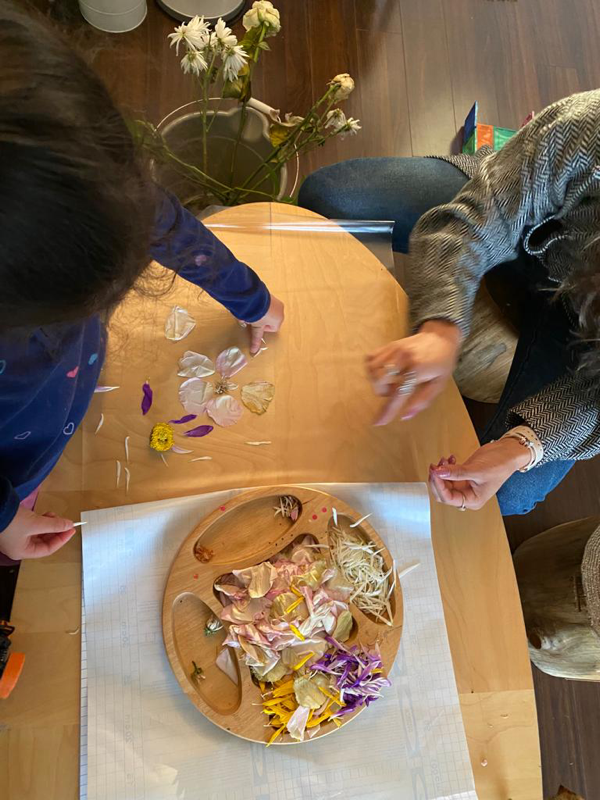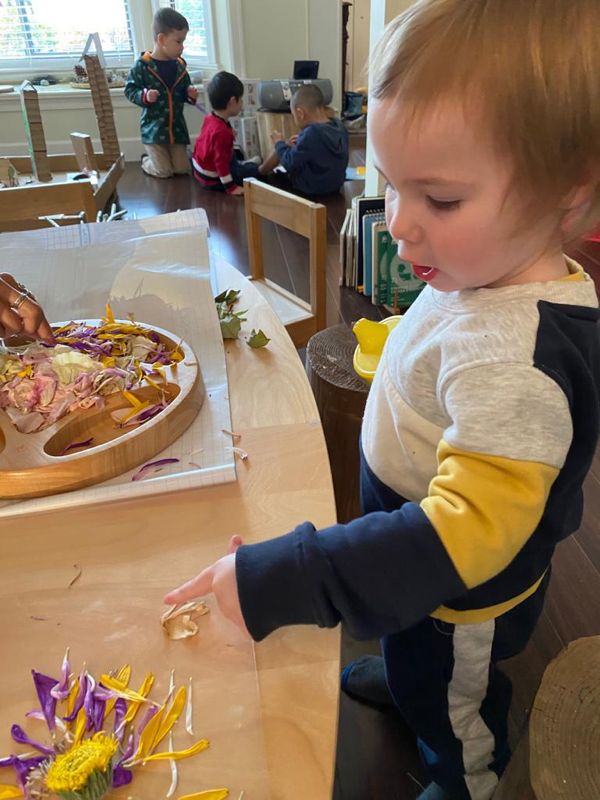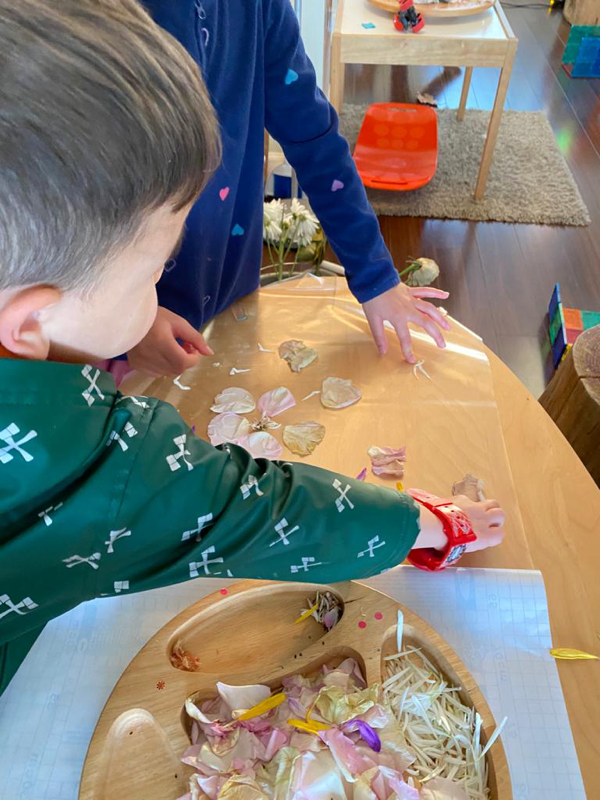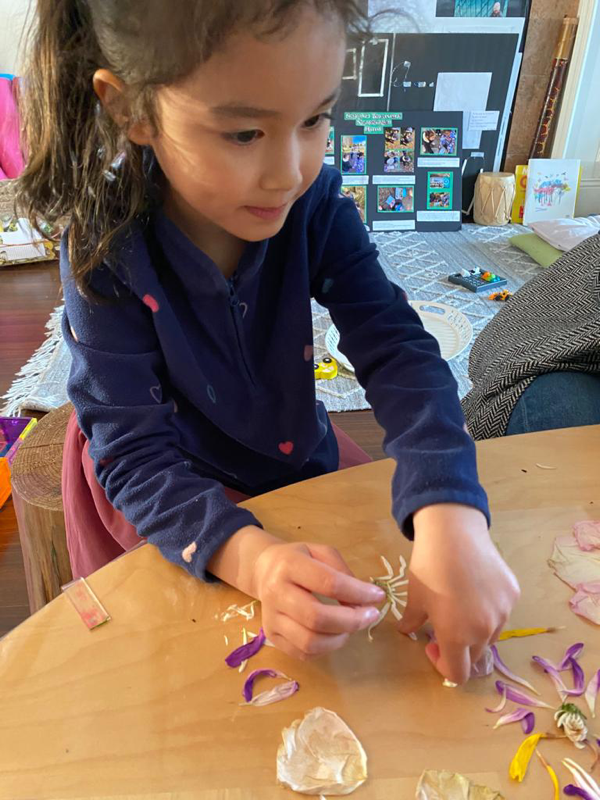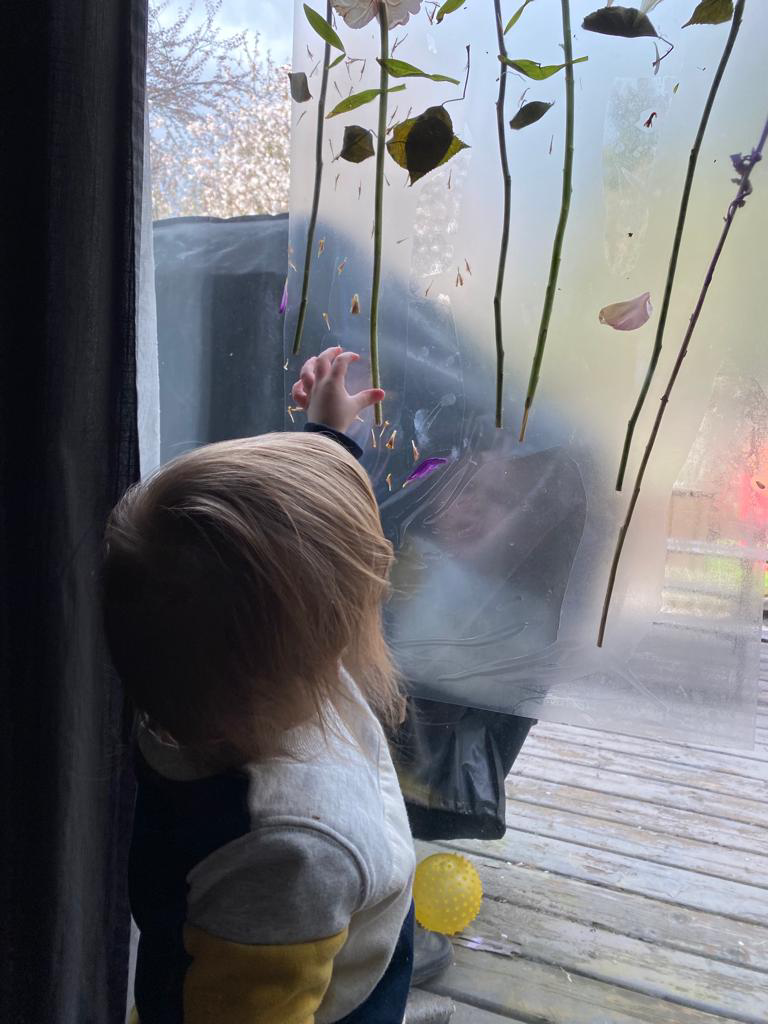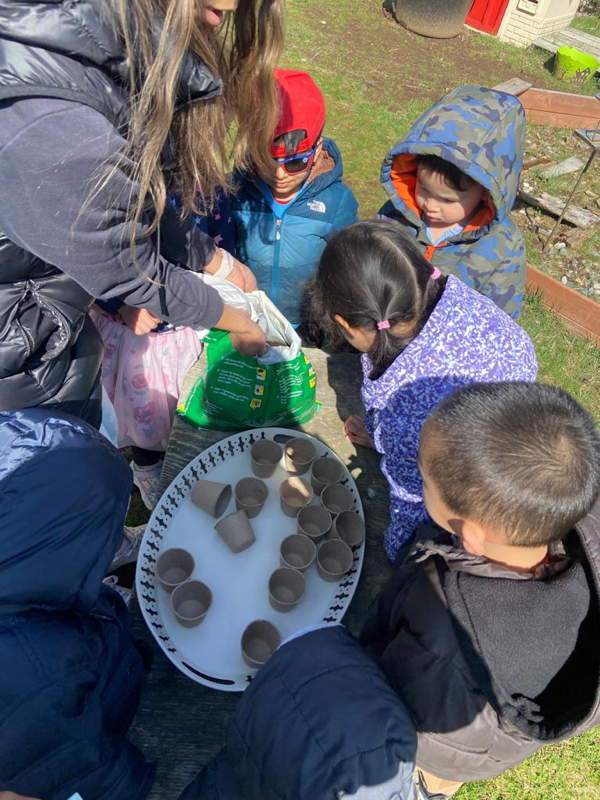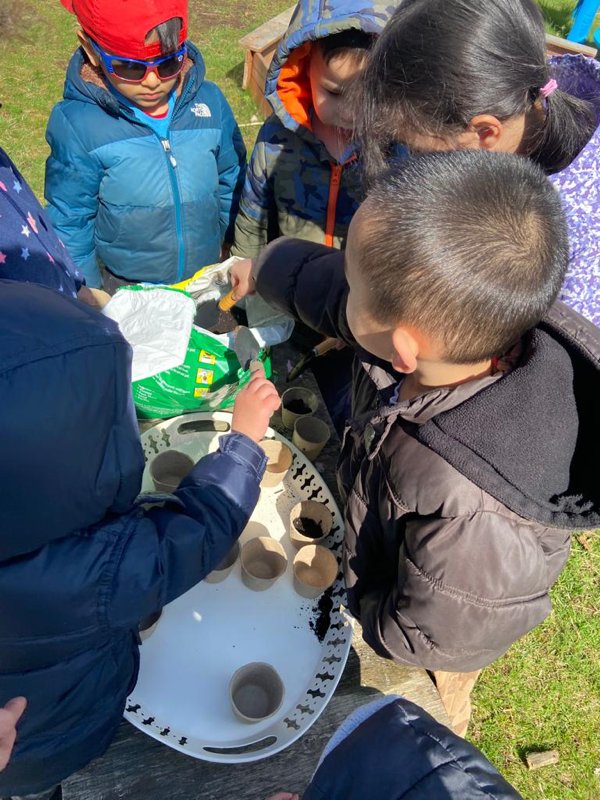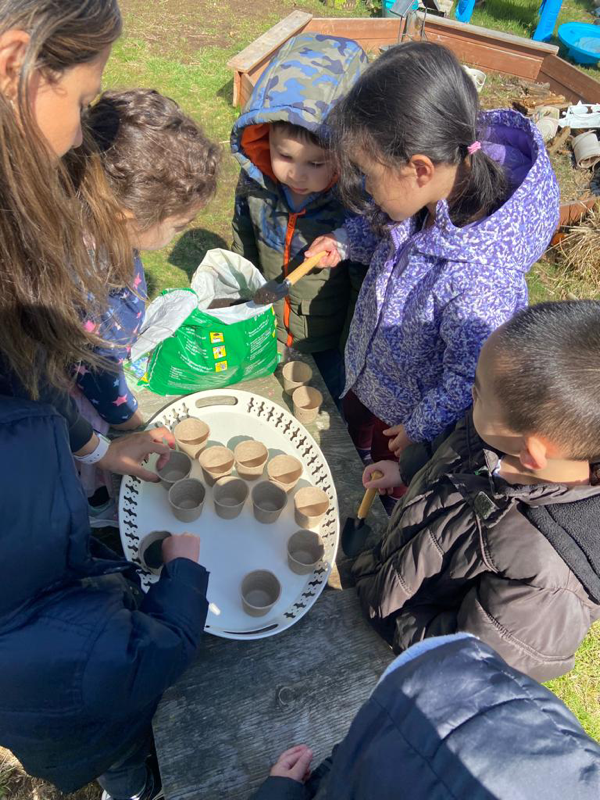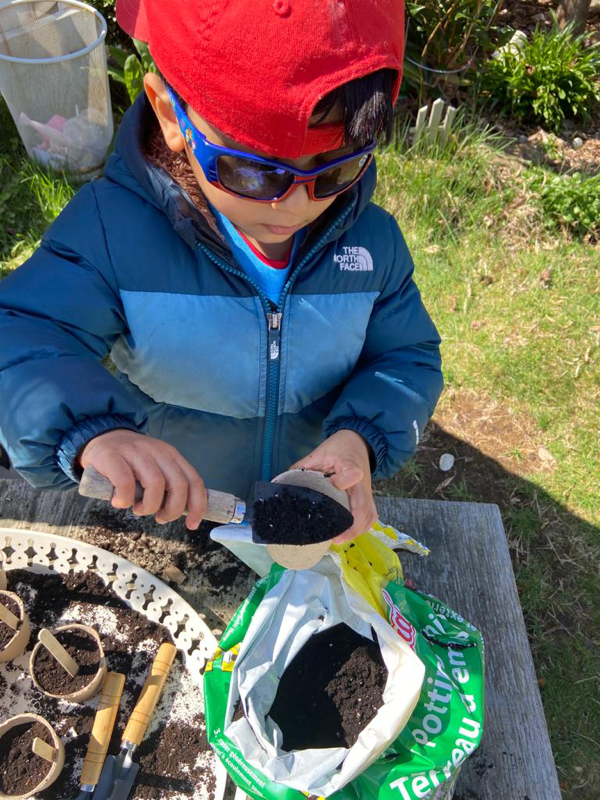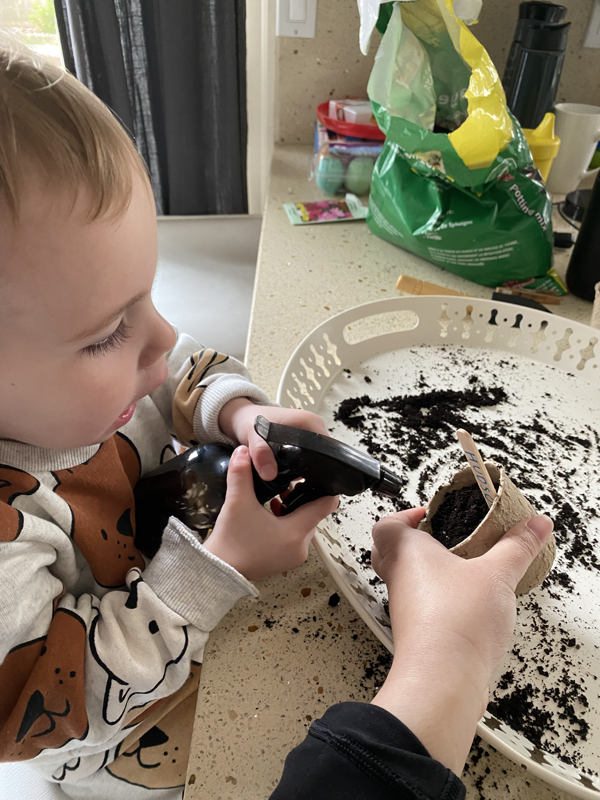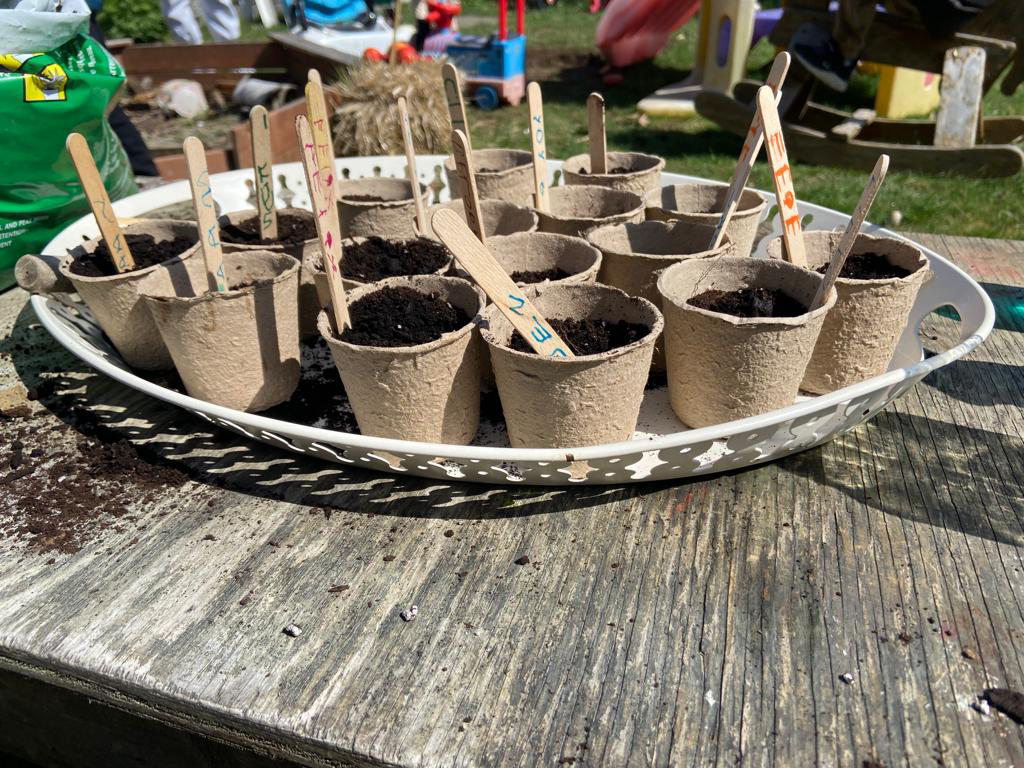|
Hello Spring! You've finally arrived although it takes a little later than usual. The blooming flowers have inspired us to preserve the beauty in a natural and friendly way to us. Integrating position as a way to develop our understanding in regard to placing objects according to the base, mid, and top layers order. 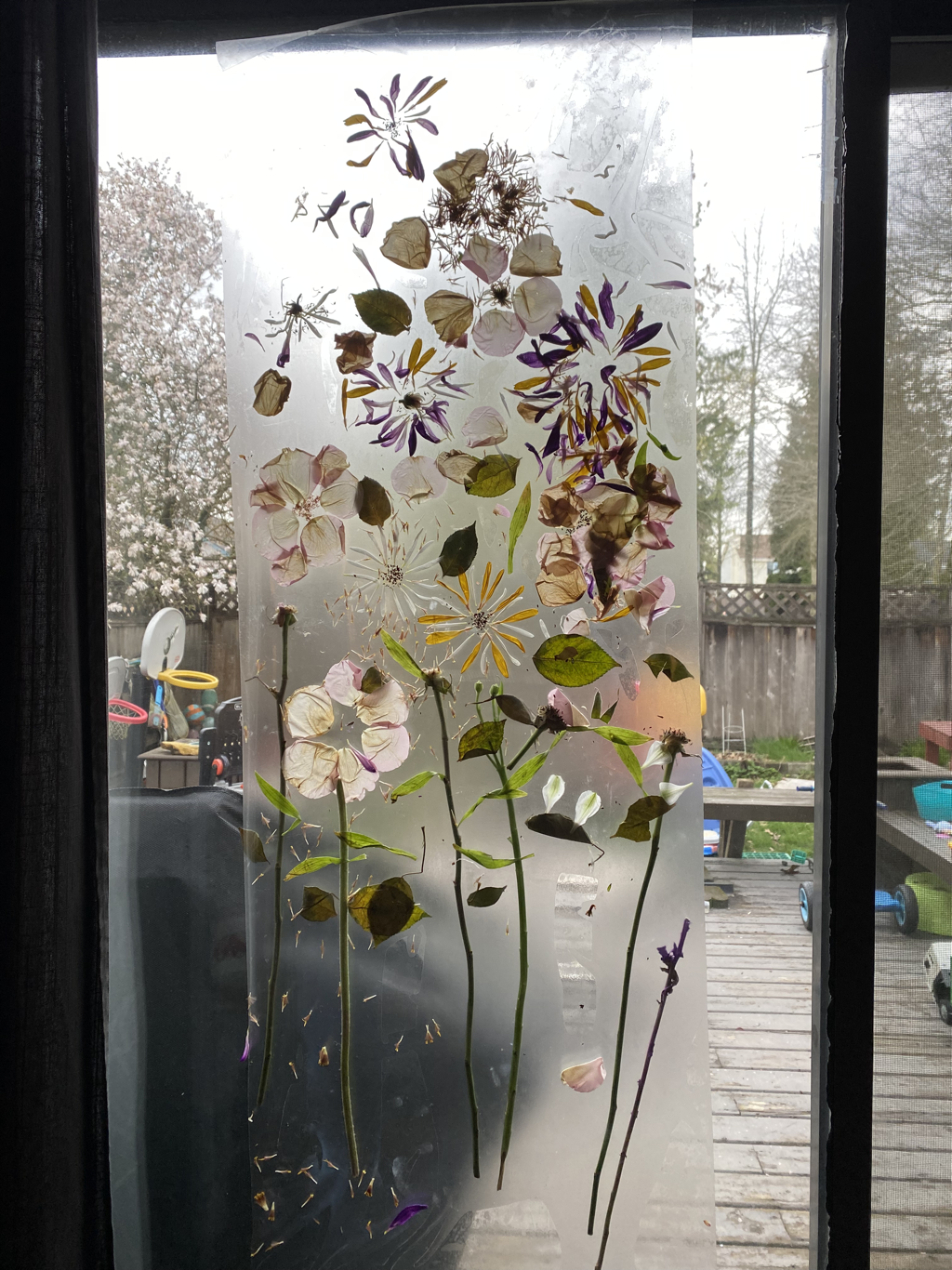 Arranging the petals, leaves, grass, and stems accordingly onto an adhesive sheet works in keeping them within the frame. The natural collection has been part of our interests toward nature. We learn how to care for petals to stay flat and smooth. After looking at the sun catcher we've created, Jana asks Hudson what the flower needs to grow. He mentions water and bees. He then goes to the sun catcher and refers to the air bubbles as water for flowers. Question: "How do we know how flowers grow?" Elie: "From little buds." Question: "How can we help flowers to grow bigger?" Elie: "By watering it." In addition, she mentions that it needs sunshine for it to blossom. After regularly watering and sharing our care with our plants, we slowly observe growth. There are visible swelling of the flower buds after a few days of planting seeds. 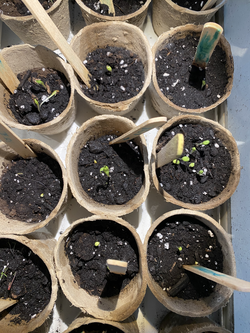 Hudson actively takes part in watering our young buds. He is working on aiming the nozzle downward. His determination to make it work is indeed being treasured by our growing plants! We revisit our ongoing interest on how the baby birds learn how to fly by referring to a short clip Osprey Chicks Learn to Fly by PBS. Based on our observation, we notice the chicks use their wings for balance and stability when they climb or jump. Through working on it, we learn when we are encouraged to slow down we begin focusing on controlled movements. These controlled movements require concentration and critical thinking. During this moment we are given the opportunity to develop a deeper awareness of our body, how it moves, reacts and how we can control it. Static balance is the ability to hold a stationary position with control such as balancing on one foot. To improve our balance we attempt to stand on one leg without holding on. Balance is the ability to maintain a controlled body position during task performance. To function effectively across environments and tasks, we need the ability to maintain controlled positions during static (still) and dynamic (moving) learning experiences. Our birdwatching continues with us recording the movement of a chickadee on the fence at our backyard. This backyard birdwatching allows us to ponder on the questions that matter to us and opens more learning possibilities. For example, "Can birds fly without wind ?" To find out some answers to our question, we utilize a fan to generate wind as moving air. Placing our origami paper birds on top of the fan is our way to explore how it moves in the wind. We pose following questions to tinker -
Indeed we learn how to make a paper bird by folding, pressing an origami firmly, and meeting corners. This learning experience develops our mathematic skills. Transforming a flat piece of paper into a three-dimensional figure involves learning the concept of symmetry. This hands-on experience requires us to manipulate basic geometric shapes such as squares, triangles, and rectangles. Dynamic balance is the ability to remain balanced while engaged in movement. Appreciating the warm sunshine, we take an opportunity to ride our bicycles while working on our dynamic balance. Understanding a special time for our beloved mother is nearing. we start unpacking by sharing our thoughts and feelings. Kindest,
Children & Friends.
0 Comments
|
No part of this publication may be reproduced, distributed, or transmitted in any form or by any means, including photocopying, recording or any other electronic or mechanical methods, without the prior written permission of the publisher.
Archives
July 2024
|
